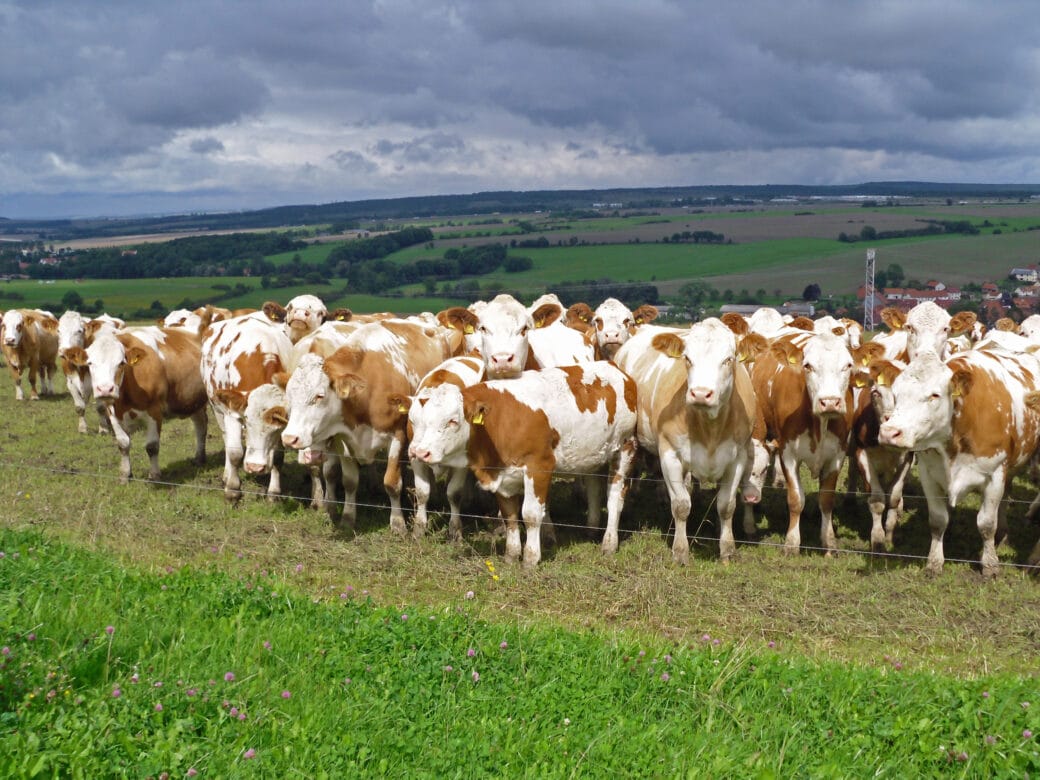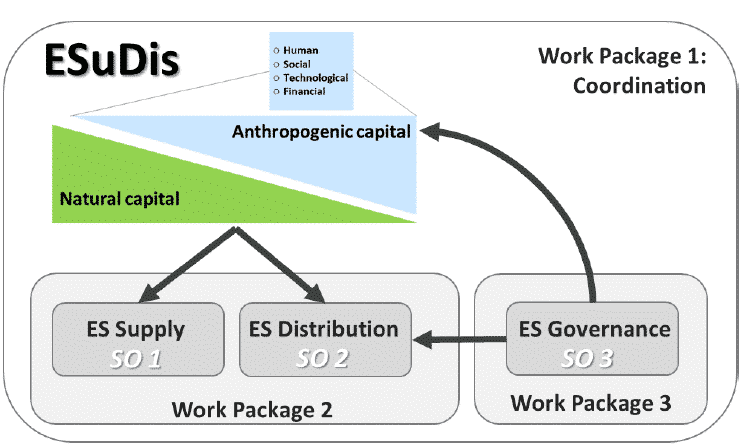Effects of land management on the supply and distribution of ecosystem services

Ecosystem services are usually conceptualised as being supplied by nature alone; however, there is increasing evidence showing that most ecosystem services are jointly co-produced by different combinations of natural and anthropogenic inputs. These anthropogenic inputs are also known as capital assets, which include, human, social, technological and financial capital.
The main goal of ESuDis is to understand the different pathways by which anthropogenic and natural capital are combined to sustainably co-produce ecosystem services and contribute to the equitable distribution of these services (Fig. 1).
We will examine how increasing land use intensity and the substitution of natural capital by human, social, technological and financial capital affect (i) the supply of multiple ecosystem services (scientific objective 1), (ii) the distribution of those services across different stakeholders and multiple spatial scales in terms of use and demand (scientific objective 2); and (iii) how supply and distribution relate to the governance of ecosystem services (scientific objective 3).
WP1: Project conceptualisation, organisation and coordination
- Task 1.1: Assembling existing data on natural and anthropogenic capital
- Task 1.2: Stakeholders identification and social survey design
- Task 1.3: Conducting and coding social survey data
- Task 1.4: Synthesis and dissemination of the results
WP2: Causes and consequences of the substitution of natural by anthropogenic capital on the supply and distribution of ecosystem services.
- Task 2.1: Effects of increasing co-production on ES supply
- Task 2.2: Effects of co-production on ES use
- Task 2.3: Distribution of ES among stakeholder groups at multiple spatial scales
WP3: Influence of the governance of the different capital on ecosystem services supply and distribution
- Task 3.1: Assessing interlinkages between governance of ES and co-production
- Task 3.2: Local governance of ES
- Task 3.3: Linkages between ES supply and distribution among stakeholders and governance












